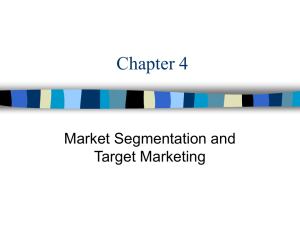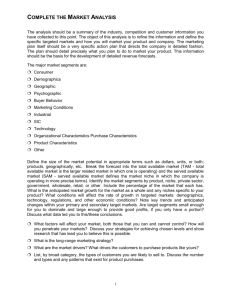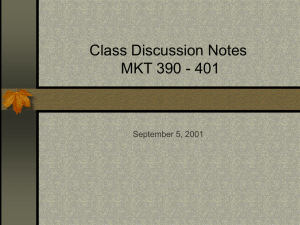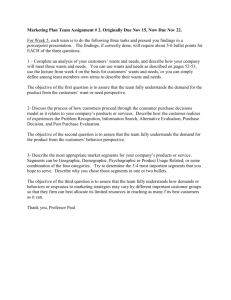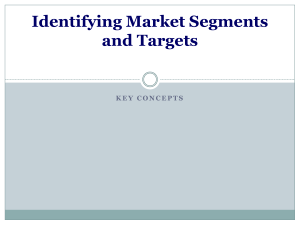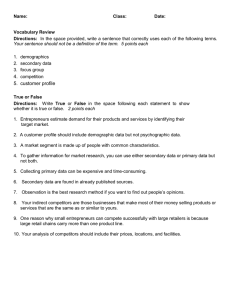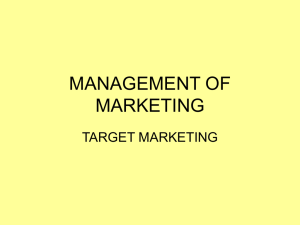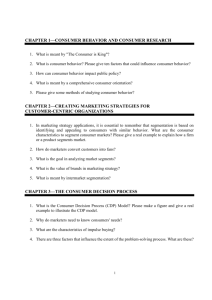(segmenting additional comments).
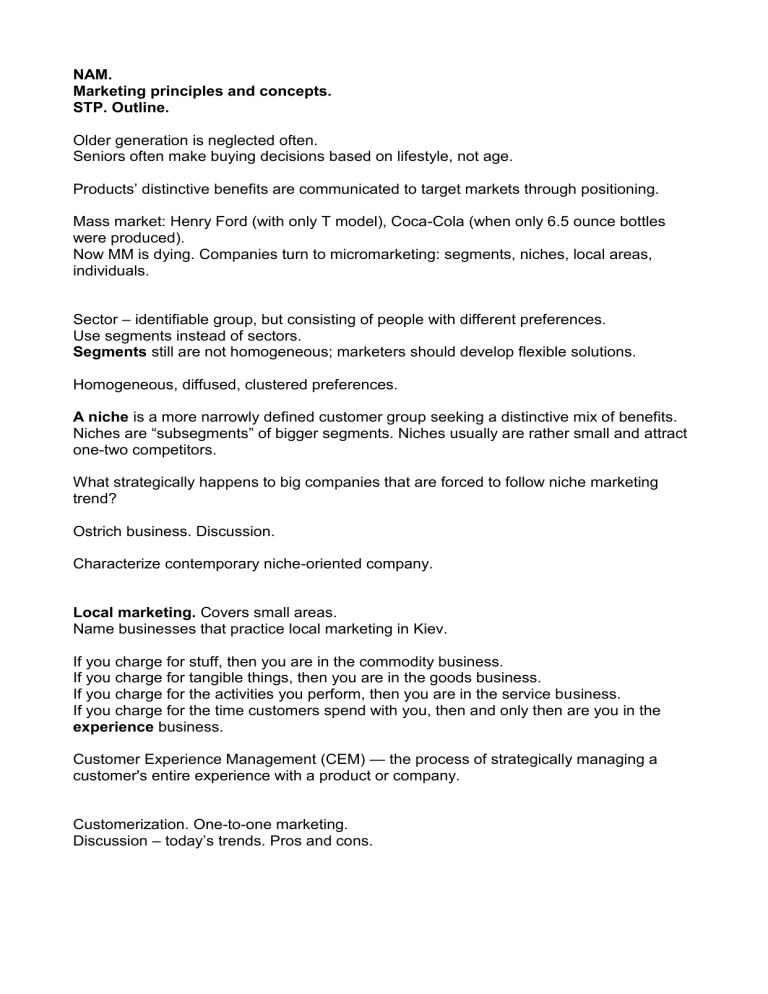
NAM.
Marketing principles and concepts.
STP. Outline.
Older generation is neglected often.
Seniors often make buying decisions based on lifestyle, not age.
Products’ distinctive benefits are communicated to target markets through positioning.
Mass market: Henry Ford (with only T model), Coca-Cola (when only 6.5 ounce bottles were produced).
Now MM is dying. Companies turn to micromarketing: segments, niches, local areas, individuals.
Sector – identifiable group, but consisting of people with different preferences.
Use segments instead of sectors.
Segments still are not homogeneous; marketers should develop flexible solutions.
Homogeneous, diffused, clustered preferences.
A niche is a more narrowly defined customer group seeking a distinctive mix of benefits.
Niches are “subsegments” of bigger segments. Niches usually are rather small and attract one-two competitors.
What strategically happens to big companies that are forced to follow niche marketing trend?
Ostrich business. Discussion.
Characterize contemporary niche-oriented company.
Local marketing.
Covers small areas.
Name businesses that practice local marketing in Kiev.
If you charge for stuff, then you are in the commodity business.
If you charge for tangible things, then you are in the goods business.
If you charge for the activities you perform, then you are in the service business.
If you charge for the time customers spend with you, then and only then are you in the experience business.
Customer Experience Management (CEM) — the process of strategically managing a customer's entire experience with a product or company.
Customerization. One-to-one marketing.
Discussion
– today’s trends. Pros and cons.
Two broad groups of variables are used to segment consumer markets.
Some researchers try to form segments by looking at descriptive characteristics : geographic, demographic, and psychographic. Then they examine whether these customer segments exhibit different needs or product responses.
(For example, they might examine the differing attitudes of "professionals," "blue collars," and other groups toward, say, "safety" as a car benefit).
Other researchers try to form segments by looking at " behavioral" considerations , such as consumer responses to benefits, use occasions, or brands. Once the segments are formed, the researcher sees whether different characteristics are associated with each consumer-response segment.
(For example, the researcher might examine whether people who want "quality" rather than "low price" in buying an automobile differ in their geographic, demographic, and psychographic makeup).
GEOGRAPHIC SEGMENTATION
PRIZM (Potential Rating Index by Zip Markets).
The inhabitants in a produced cluster tend to lead similar lives, drive similar cars, have similar jobs, and read similar magazines.
Produces 4 types of clusters.
Marketers can use PRIZM to answer such questions as these:
Which geographic areas (neighborhoods or zip codes) contain our most valuable customers?
How deeply have we already penetrated these segments?
Which distribution channels and promotional media work best in reaching our target clusters in each area?
DEMOGRAPHIC SEGMENTATION
One reason is that consumer needs, wants, and usage rates and product and brand preferences are often associated with demographic variables. Another is that demographic variables are easier to measure.
Age vs. life stage.
Gender. Women become a more solid segment.
Income. Finding the best spenders ’ category.
Generation. (Which ones we have in Ukraine?).
Social class. Behavior changes over time (e.g. greed and ostentation is expected to pass away).
PSYCHOGRAPHIC SEGMENTATION
Division based on psychological/personality traits, lifestyle, or values
SRI Consulting Business Intelligence's (SRIC-
BI) VALS™ framework (commercial system).
BEHAVIORAL SEGMENTATION
Buyers are divided into groups on the basis of their knowledge of, attitude toward, use of, or response to a product. Decision roles. Behavioral variables. Conversion model (as a rule: stress more loyal customers, ignore diehards).

